
As I recounted in my last post about a train ride through American climate change, my wife Karin and I have been in the USA for the past couple of weeks, visiting colleagues in the west and ultimately heading eastwards to Virginia for a workshop on monarch butterflies and their milkweed hosts. The meeting was organised by Anurag Agrawal, professor at Cornell University and author of the recent book Monarchs and Milkweed, highly recommended to anyone interested in the natural history of plants and insects. The monarch (Danaus plexippus) is an iconic migrating species that travels from Mexico to Canada and back, over the course of a few generations. This behaviour, and their vast over-wintering assemblages, have become the focus of intense efforts to understand their ecology and biology. Their caterpillar host plants are mainly milkweeds (Asclepias spp.) and bringing together both plant and animal scientists is important for gaining a fuller over view of the issues facing the monarchs and the milkweeds, and how both can be conserved in a time of anthropogenic change.
The venue for the workshop was Oak Spring, Upperville, the former home of Paul and Rachel (“Bunny”) Mellon which has been turned into the base of operations for a philanthropic foundation specialising in plant science, horticulture, and botanical art. The Oak Spring Garden Foundation (OSGF) is “dedicated to inspiring and facilitating scholarship and public dialogue on the history and future of plants, including the culture of gardens and landscapes and the importance of plants for human well-being”. The OSGF generously funded the workshop, including accommodation and travel for participants. This brought together a small group of scientists from the USA, the UK and Brazil, together with an artist, a milkweed horticulturalist, and two science writers. Their brief was to discuss the latest developments in our understanding of monarch butterflies, their decline and conservation, and the taxonomy, evolution and ecology of milkweeds and the wider groups of Lepidoptera and the plant family Apocynaceae to which these organisms belong. My invitation to take part was due to the research on the pollination ecology of this family I’ve conducted, spanning about twenty five years and culminating in a recently published assessment of the diversity of pollination systems in Apocynaceae.
First things first: Oak Spring is one of the most tranquil, beautiful, and inspiring places where it’s ever been my privilege to stay. Here’s a few photographs, but they really do not do justice to the buildings and garden, their setting, nor to the unique atmosphere of Oak Spring.




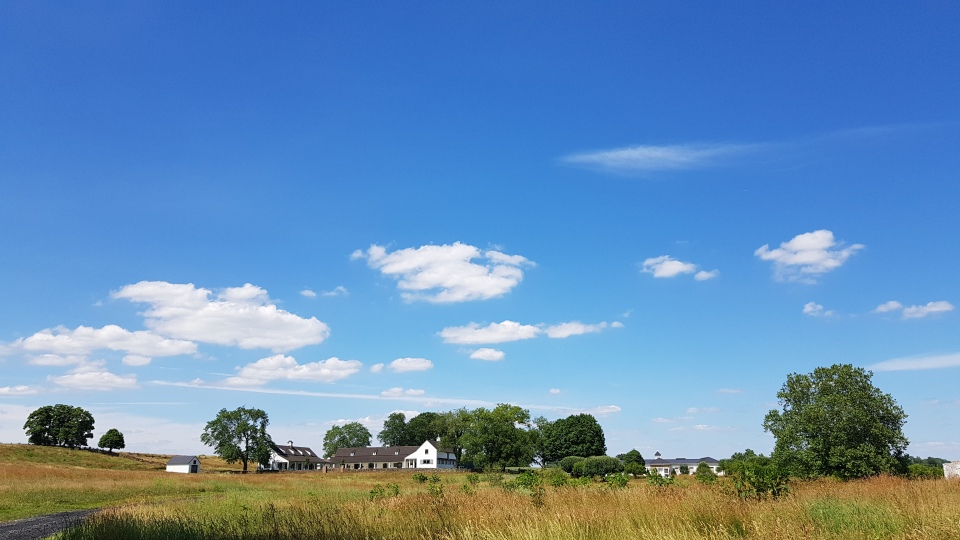
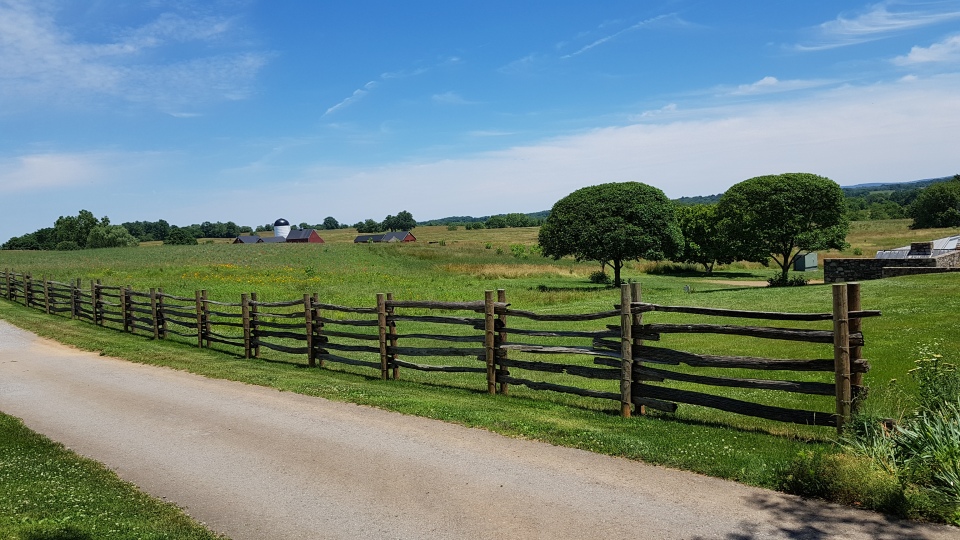

So to the science. The workshop started with a set of short presentations on our recent research findings and the motivations for our interests in these organisms. On the second day we then moved on to discussing ideas for future collaborations between the participants and how that work might be funded in the future. Presentations and discussions were mainly held in the Basket House, named for obvious reasons:


Each of us was also interviewed on camera to build an online archive of the work we do and why we do it.
The advantage of face-to-face meetings such as this, and why Skype and so forth can never fully replace them, is the free-flowing conversations that occur within the formal sessions and outside them. Among the many things that I learned from presentations and discussions were:
- The California monarch population has declined by almost 90% this year and there’s an urgent need to understand why this has happened. Climate change has been implicated, especially in relation to the increased frequency of wildfires in this region.
- Existing methods of nectar extraction from milkweed flowers may strongly underestimate the volume available to flower visitors, and overestimate the sugar concentration. Using a small centrifuge to spin out the nectar seems to be the most effective method.
- Asclepias arrived in the Americas (probably from Africa) some 10 million years ago (mya). However Danaus only arrived about 3.7 mya, so there was a long period of time in which the plant was not co-evolving with one of its major herbivores.
- There is strong evidence of migrations along the Andes by a close relative of the monarch, Danaus erippus. Migrations in this group of butterflies therefore extends beyond the iconic D. plexippus.
- Sonoran Desert Asclepias are sister group to the rest of the New World Asclepias spp. The exact route by which the African ancestors made it to the Americas is unknown, it could be via Asia and the Bering Strait, or across the Atlantic by way of island stepping stones. Either way, the phylogenetic position of the Sonoran milkweeds implies that a lot of Asclepias species have gone extinct over the past 10 million years.
- Climate change seems to be resulting in more complex and unpredictable windows of opportunity for monarch egg laying and caterpillar development. The monarchs are most successful in late spring and late summer, but not in all years.
- Likewise, extreme precipitation of the kind I recently documented in the USA is also likely to have a negative impact on the monarchs and their host plants.
- There is molecular evidence that monarch butterflies went through a huge genetic bottleneck in the 1960s-1970s, for reasons that are not altogether clear.
All of these findings, and more that there isn’t space to document, point to a need for further research to better understand these organisms if we wish to secure their futures.
By the end of the workshop we had made some concrete decisions on future steps:
- The African members of the genus Asclepias, plus about 20 other closely related genera, require more critical taxonomic and phylogenetic assessment in order to understand their systematic relationship to the North and South American Asclepias species.
- A poster (or possibly series of posters) will be produced that explain the ecology of the monarch, its relationship with milkweeds, the patterns of migration, and the value of milkweeds as nectar sources for a diverse range of pollinators.
- We will explore a multi-agency grant application to further develop the collaborations between participants.
The final day of the workshop involved a field trip around Virginia to see some of the local milkweed species, many of which live in woodland. That surprised me: I always envision Asclepias spp. as grassland or desert plants. The leader of the field trip, Mark Fishbein, had a hit list of 8 species that he wanted us to see and in the end we located all of them, including a rare hybrid population of A. syriaca x A. exaltata, plus the tropical milkweed Asclepias curassavica planted in the OSGF garden, plus the distant relative dogbane Apocynum cannabinum. Here are some images from that day:

Searching for milkweeds along Skyline Drive, Shenandoah National Park

Poke milkweed – Asclepias exaltata

Hunting that elusive hybrid milkweed!

Caterpillar of the monarch butterfly feeding on a milkweed
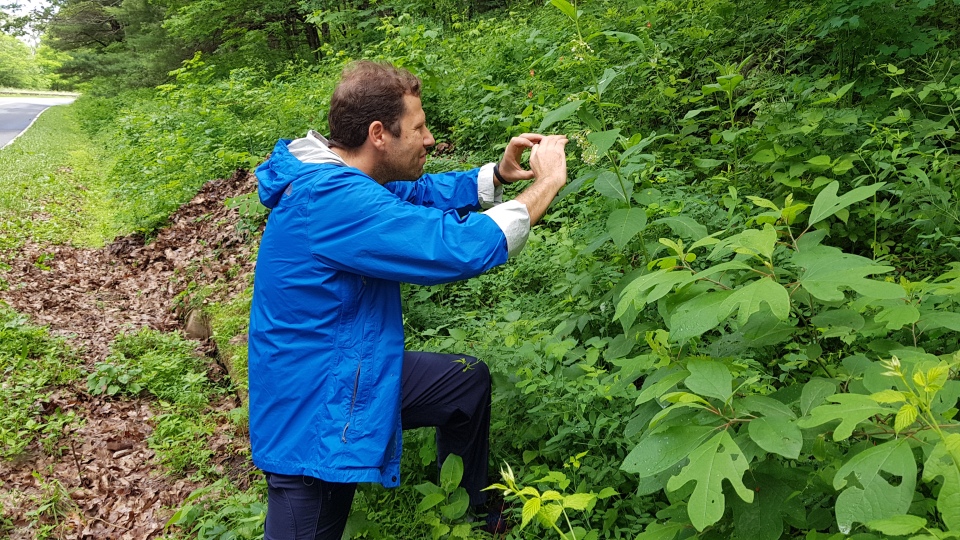
Alessandro Rapini intent on getting a good photo of the A. syriaca x A. exaltata hybrid

A bumblebee and a butterfly visiting A. exaltata
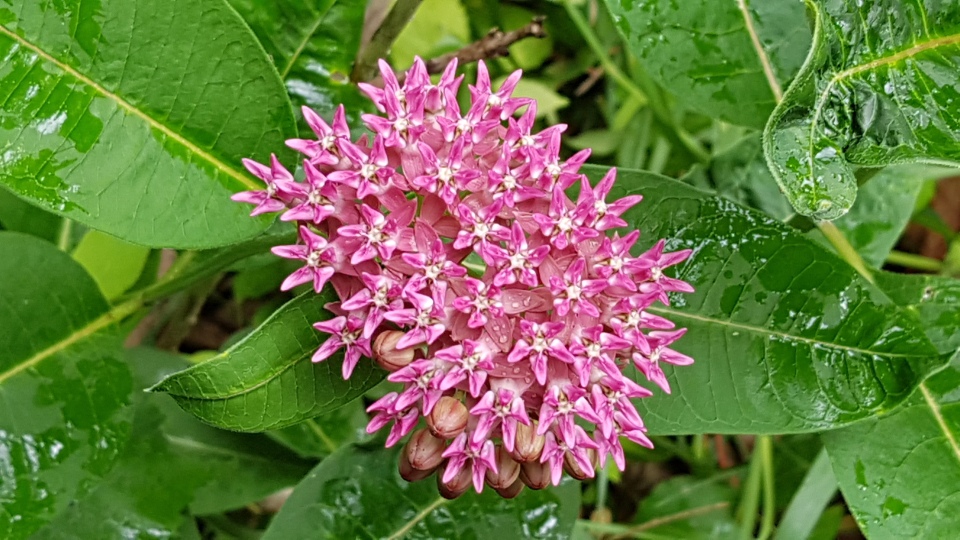
Purple milkweed – Asclepias purpurascens

Common milkweed – Asclepias syriaca – with a visiting skipper butterfly
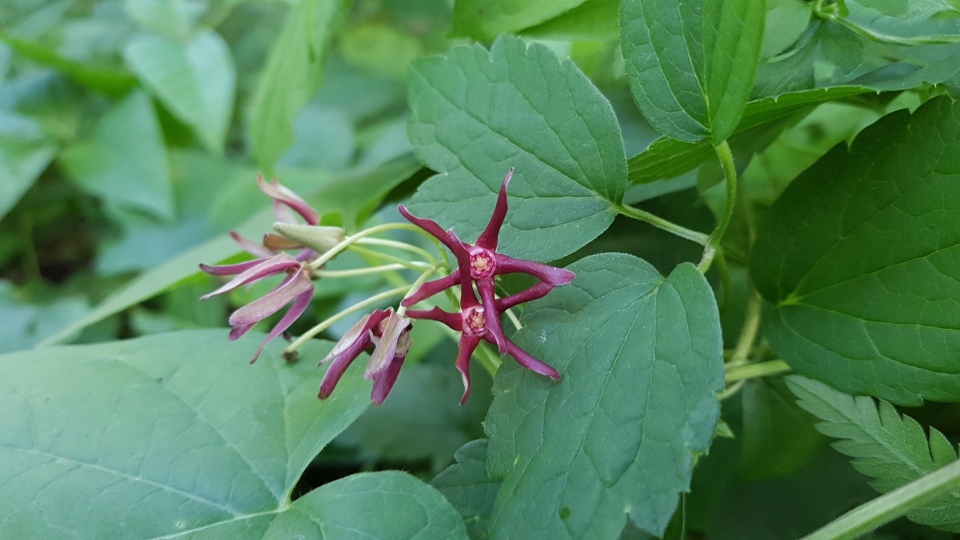
Climbing milkvine – Matelea obliqua – a member of a largely fly-pollinated group of New World asclepiads
Thanks to my fellow workshoppers for such a stimulating and enjoyable meeting, and to all the staff at Oak Spring for making us feel so welcome. Particular thanks go to Prof. Sir Peter Crane who, as President of the Oak Spring Garden Foundation, was hugely supportive of the workshop, and to Angie Ritterpusch, Head of Events and Guest Services, for logistical and organisational support.

Hi Jeff – sounds like you had a wonderful time here … very interesting – loved the photos … thank you for letting us see this day. Also good to know you both had a lovely holiday – cheers Hilary
I expect you already know this, but D. plexippus occurs in Australia too. So far as I know it arrived by itself. The Ascelpias it feeds on is an introduced invasive alien. There are other native Danaus spp in Australia as well. I can’t remember what they feed on.
Yes, thanks, I was aware of that. Some interesting experiments going on globally!
The California decline occurred March-June before any serious wildfires occurred. If biotic factors were involved (e.g. egg fertility problems, heavy predation of eggs and caterpillars) nothing could have been done
on a landscape scale to mitigate their impact.
Thanks for the comment Paul. The decline was first noted in the winter and air quality from wildfires earlier in 2018 have been suggested as one possible factor among several – see: https://xerces.org/2018/11/29/critically-low-monarch-population-in-california/
With regard to “biotic factors” – sudden species declines do not occur independently of other factors.
Xerces claims: “There was a severe and extended wildfire season in California [July-Nov. 2018]. But, like I said, the California monarch population crashed between March – June 2018, before any wildfires occurred. Therefore there is no scientific support for the belief that the July-Nov wildfires may have been a major contributor to the crash. Xerces also blames drought whereas UC Davis professor Arthur Shapiro points out the California monarch population actually boomed during the 2013-2016 drought: https://youtu.be/hJKNOHSNQg8
But there were also major wildfires in late 2017 – see: https://en.wikipedia.org/wiki/2017_California_wildfires
“5 of the 20 most destructive wildfires in the state’s history burned between October and December [2017]”
In addition, as far as I can tell, Shapiro is incorrect – winter numbers of monarch did not “boom” during the drought – see: https://www.westernmonarchcount.org/wp-content/uploads/2014/11/Western-monarch-PVA_Schultz-et-al.-2017.pdf
Pingback: To Kill a Monarch | Gulliver's Pulse
Pingback: Last year’s mother, this year’s child: cinnabar moths in the garden | Jeff Ollerton's Biodiversity Blog